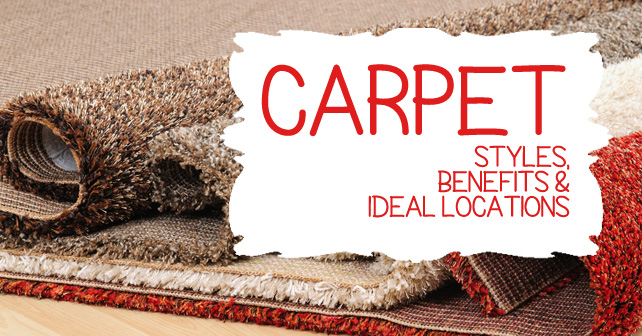Is the carpet looking a little dull and worn out? Perhaps it is time for a change.We have put together a list of the different styles available to help your decision making process. Here are the most popular styles:
Saxony: Level-cut pile is made up of closely packed tufts; luxurious surface good for formal settings.Plush: Also called velvet; yarn is longer than a saxony, but is less dense; good for informal rooms.Frieze: Twisted tufts that curl at the surface create a textured look that hides footprints; suitable for high-traffic areas.Level Loop: Uncut pile contains loops of yarn of the same height; hides dirt well in high-traffic areas.Multilevel Loop: Two or three levels of tufts form a random, sculptural look for informal and formal rooms.Cut-and-Loop (or Cut-Loop): Higher tufts of cut yarn combine with lower loops for informal settings.
Fiber: Although the overall choice here is either synthetic or natural, several fibers are available in the synthetic category.
Wool: Noted for its soft, luxurious feel, but may be less resilient than synthetics, and carpets usually costs more.Sisal: Made from plant fiber, and popular for its textured look.
Nylon: The strongest, most resilient carpet fiber; good for all traffic areas.Polyester: Soft to the touch, but less resilient than nylon; resists water-soluble stains; carpets better suited for low-traffic areas.Olefin: Resists moisture and mildew; suitable for both indoor and outdoor applications.Acrylic: Often used in plush or level-loop carpet; offers the luxurious appearance and feel of wool at a lower price.
In addition to noting the fiber, pay attention to how the carpet is manufactured. Check the following:Yarn Twist: All yarns in cut-pile carpeting have been twisted and heat-set to retain the twist. The tighter the twist, the longer the carpet will keep its original appearance. Typically, carpets feature yarns with 2.5-6.0 turns per inch, with most in the 3.5-5.0 TPI range.Pile Height: Shorter nap resists crushing and looks newer longer.Density: The amount of yarn used and the closeness of the tufts has a large impact on performance. Denser carpets will be more crush-resistant. To determine density, bend the carpet. Less backing will show in denser carpets.
Tags: home ideashouse ideashouse tipsrenovationsroom ideas
Recent Posts
-
Jul 21, 2014 - 1,466 Comments
-
Jul 7, 2014 - 1,549 Comments
-
Jun 30, 2014 - 1,389 Comments

1,437 Responses to “Carpet: Styles, Benefits & Ideal Locations”